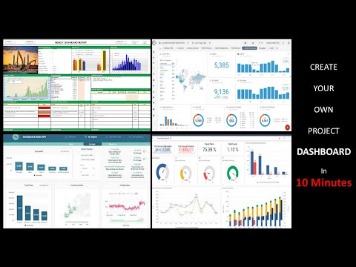
Activity-based costing or ABC costing can provide a unique picture when utilized to reveal products that generate profits vis a vis those that don’t. The business can then identify activities or production strategies that might require a revamp to ensure the profit margins are extended. While more specific and accurate, activity-based costing might cause businesses to undertake an unnecessary effort in case the products they produce are simplistic, with their costs being more straightforward to track. Given that manufacturing also comes under numerous regulations and tax norms, tax accountants and the process of accounting taxes are crucial to a manufacturing firm. It is also important for business owners and accountants to be aware of the best and worst states for business taxes before setting up in a location that maximizes the business value.
A guide to small business finance
Now that we have gained a deeper understanding of the theoretical foundations of the manufacturing accounting process flow, let’s explore how it functions in real-world scenarios. The costs that contribute to your total manufacturing cost are known as direct costs. The cost of goods sold Manufacturing account tracks information on all inventory items sold by the firm. FreshBooks is another cloud-based option that allows you to track expenses, send invoices, and manage customer relationships. It integrates easily with third-party software solutions to help with project management. Intuit QuickBooks is cash receipts procedure the number one accounting software for small businesses, and QuickBooks Online is an excellent entry point for manufacturers.
Overhead Cost Assignment
FundKite can approve you in as little as 2 business hours for up to $2,000,000 when we are able to obtain your business data and verify your bank account. Manufacturing accounting follows the same fundamental principles as accounting in other industries, but there are many more moving parts than usual. Let’s look at some general best practices you should follow to optimize your accounting system. Software for established businesses looking for greater efficiency, flexibility, and insight. Having these standards allows you to detect variances that can be analyzed, allowing trends to be spotted, and enabling you to make the right adjustments to pricing.

These insights enable businesses to optimize their inventory management strategies and achieve a more streamlined and profitable manufacturing process. It helps businesses manage their finances, inventory, and cash flow and prepare for future production costs. Businesses use several manufacturing accounts, but the most common are raw material, direct labor, overhead, work in process, finished goods, and cost of goods sold. Manufacturing businesses of all sizes have unique accounting challenges, due in part to long timelines before a product is ready for sale.
Please do not copy, reproduce, modify, distribute or disburse without express consent from Sage.These articles and related content is provided as a general guidance for informational purposes only. These articles and related content is not a substitute for the guidance of a lawyer (and especially for questions related to GDPR), tax, or compliance professional. When in doubt, please consult your lawyer tax, or compliance professional for counsel. Sage makes no representations or warranties of any kind, express or implied, about the completeness or accuracy of this article and related content. Job costing, also known as variable costing, is better if you manufacture to order or focus on a small amount of units.
If job costing is ideal for manufacturing businesses that produce lower numbers of unique products, process costing is for those that create a high volume of homogenous units. Production costing methods organize your cost accounting records to help management make decisions. Depending on your business model, you may prefer to structure your accounting around individual units, product lines, or processes. Features found in accounting software such as inventory management can help you optimize the way you use inventory, such as providing alerts when your stock needs replenishing.
These highly extensible systems are known as enterprise resource planning (ERP) platforms. As a manufacturing business, you understand the crucial link between a seamless production line and achieving lasting success. The efficient flow of operations, from raw materials to finished products, is vital to meet customer demands and maintain a competitive edge in the industry. From a manufacturing accounting perspective, indirect materials are often considered overheads rather than materials.
Some of the benefits of having a Manufacturing account include increased efficiency, improved cash flow, better budgeting, greater flexibility, and the ability to save time and money. This information helps companies arrive at better decisions about when to buy materials and sell products. A manufacturing account is one of the three accounts in the accounting system, the other two being a trading account and balance sheets. This information can help companies budget for future production runs and make informed financial decisions. Moreover, it is dubbed a complete business because it buys the what is inventory carrying cost raw materials used to create a product before selling it.
Inventory valuation
- It can take months to get the raw materials you need, particularly if there are supply chain issues.
- This is necessary, for example, to understand how you should be pricing your product and how to achieve or exceed your set profit margins.
- The income statement remains the same except for the transfer of goods manufactured to a trading account to be treated as finished goods (at par with purchases).
- A manufacturing company differs from a merchandising company in the reporting of the cost of the merchandise (goods) available for sale and sold during the period.
- Addressing the concerns will help you streamline production costs for better efficiency and allow you to run a lean manufacturing model that turns higher profits.
Let’s explore the essential features that every excellent accounting software for manufacturing should include. Other manufacturing account types may include administrative costs, marketing costs, and cost of goods sold (COGS). A manufacturing company reports taxes as a separate item in the income statement after the net profit.
Direct Labor Manufacturing Account
The job order costing method calculates costs per manufacturing project or unit, making it useful for make-to-order manufacturers, construction manufacturers, and the like. It is based on calculating standard rates for the direct and indirect costs of products. These predetermined “standards” are usually based on the company’s previous experiences and are routinely updated to reflect market fluctuations. Production costing methods are manufacturing accounting methods used to calculate and analyse your costs to produce finished internal controls goods.
